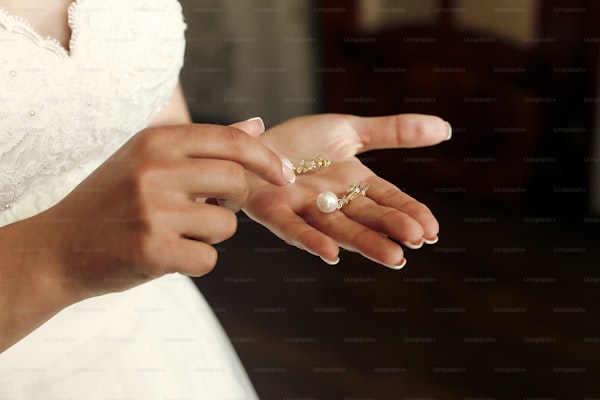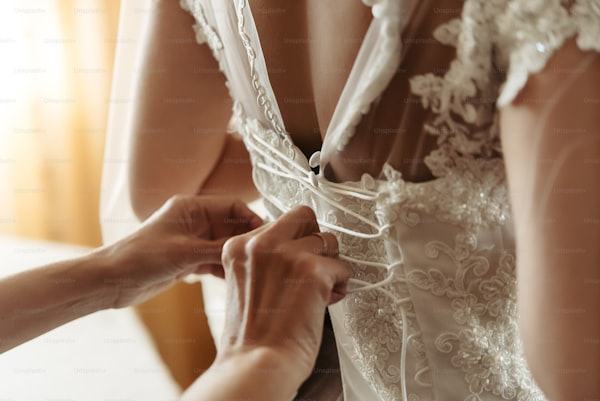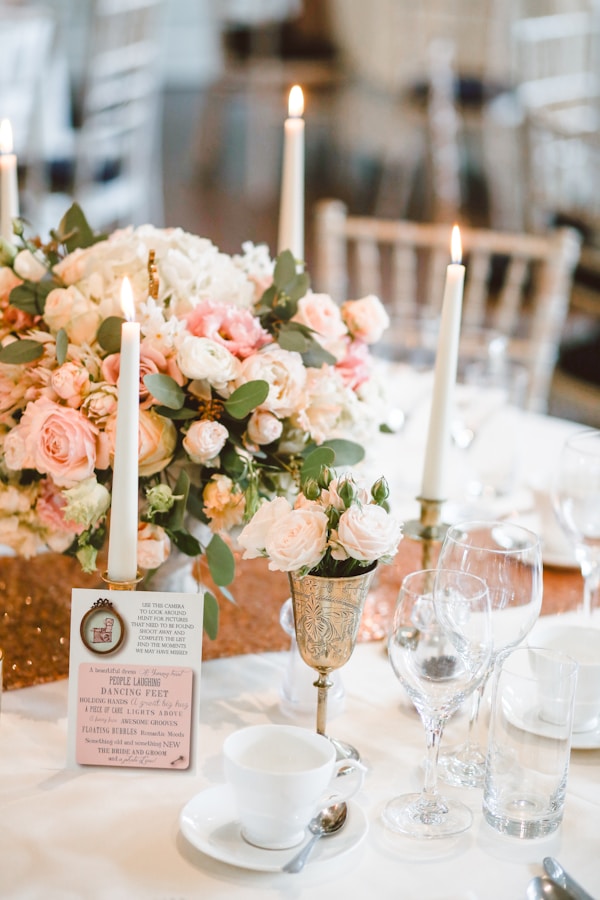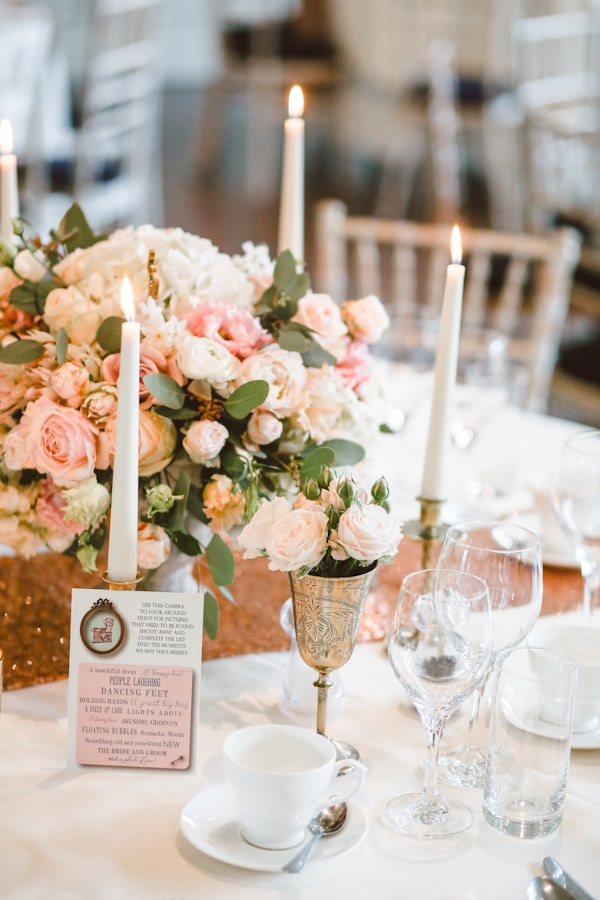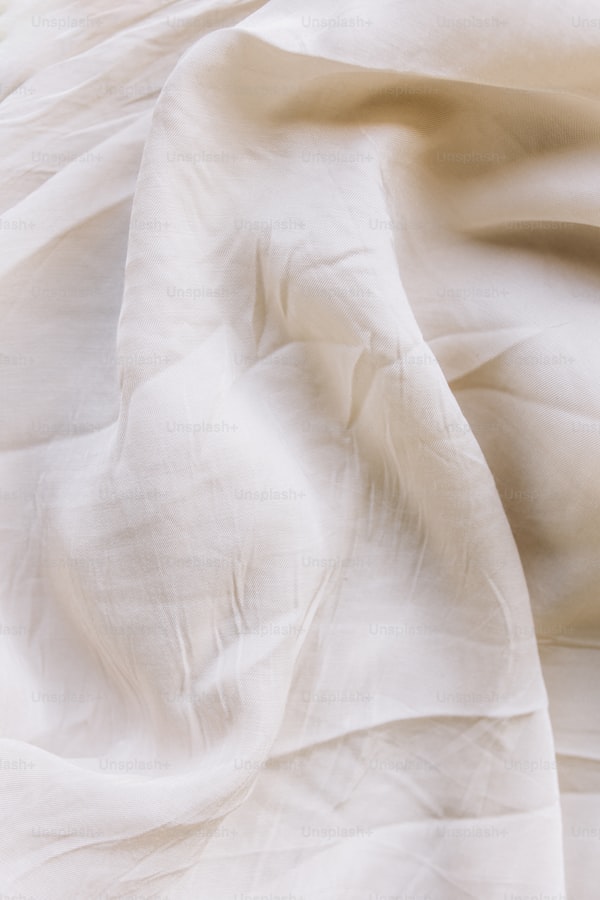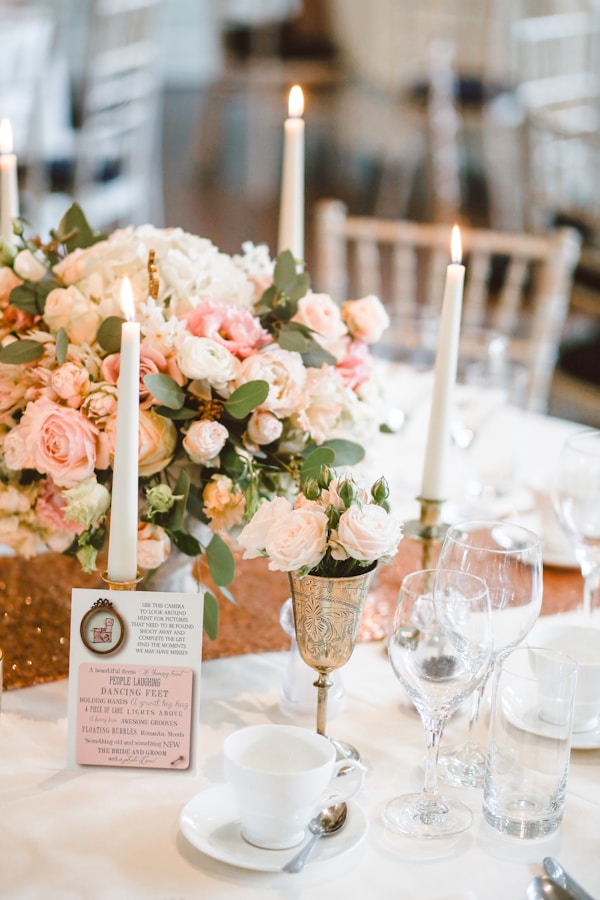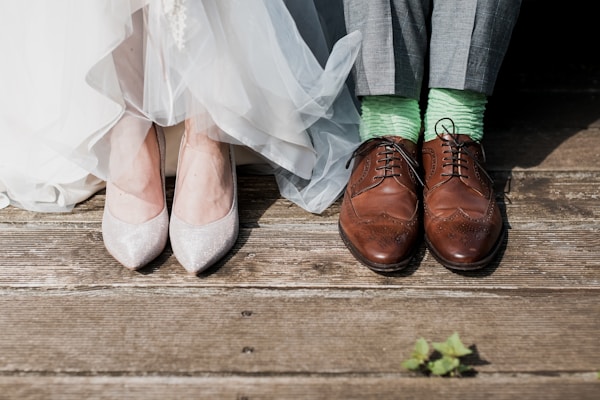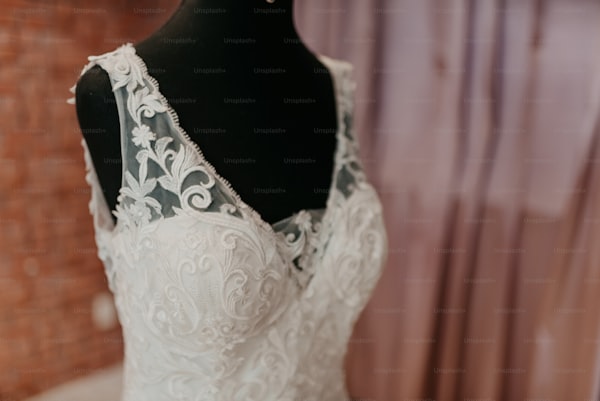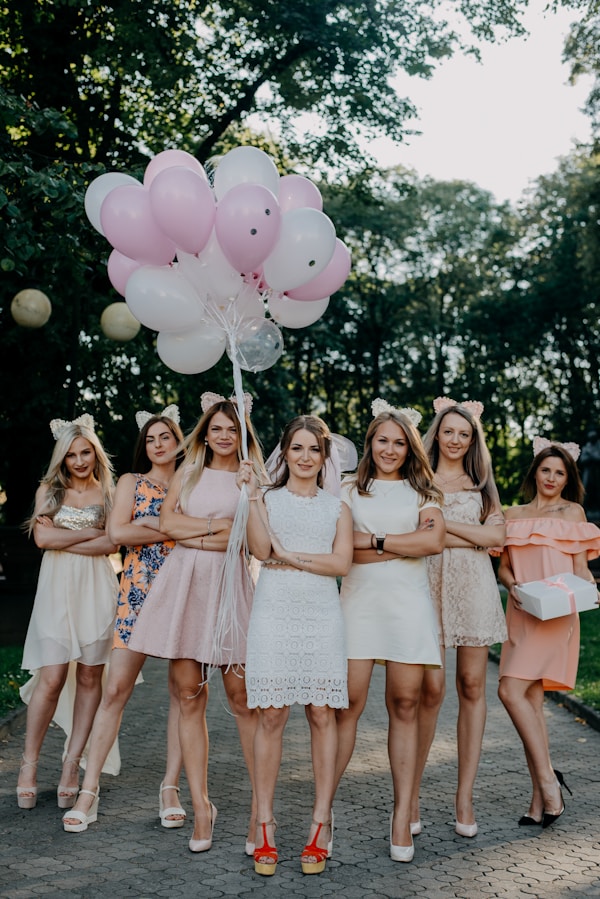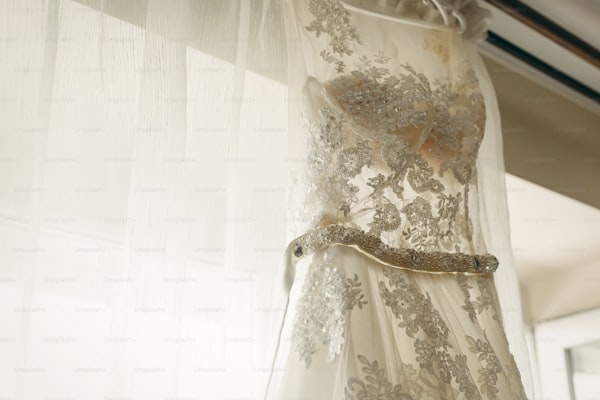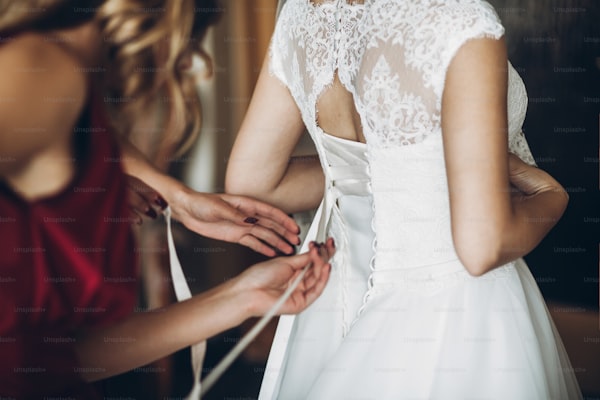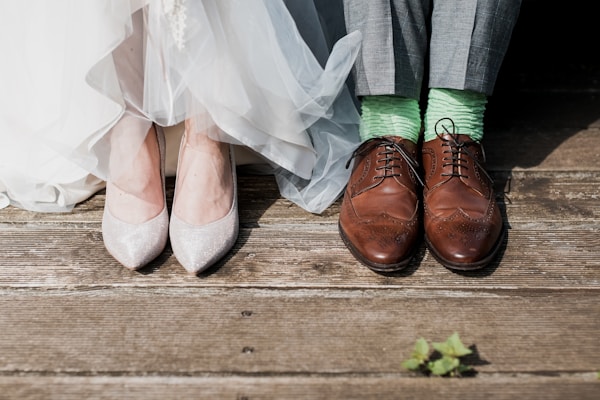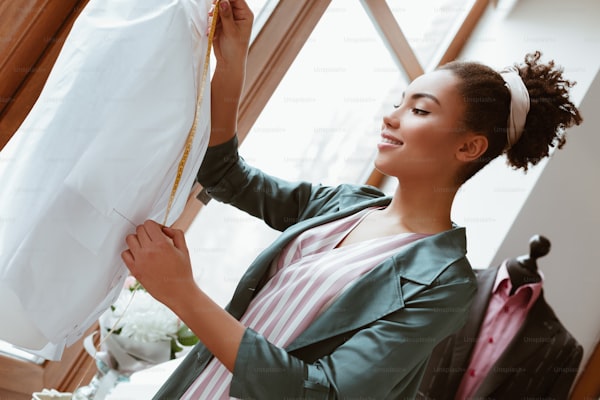Effective Strategies to Prevent Bead Loss in Wedding Dress Production
IntroductionCreating a wedding dress is a meticulous art that demands attention to detail, particularly when it comes to embellishments like beads. As one of the most cherished elements of a bride's gown, beads add elegance and sparkle; however, bead loss during the production phase can lead to dissatisfaction and increased costs. So, how do you prevent bead loss during the production of a wedding dress? In this article, we'll explore various effective strategies to ensure the integrity and beauty of your design, while offering tips to enhance your overall production process.Understanding Bead Loss: Causes and ImplicationsBead loss in wedding dress production can be attributed to several factors. Understanding these can help you implement preventative measures effectively. Here are some common causes: Improper Sewing Techniques: If beads are not securely sewn onto the fabric, they can easily fall off during production or after the wedding. Low-Quality Materials: Using inferior beads or threads may lead to premature wear and tear. High-Volume Production: In a fast-paced environment, attention to detail can be sacrificed, leading to increased bead loss.Preventive Measures: Best Practices for Bead ApplicationTo mitigate bead loss, implement these best practices in your production processes:1. Invest in Quality MaterialsEnsure that you are using high-quality beads and threads that can withstand the stresses of wearing and cleaning. Opt for materials such as glass beads o...
Mastering Wedding Dress Alterations: Expert Tips for Lace-Up Back Adjustments
How to Handle Alterations for a Wedding Dress with a Lace-Up Back?Wedding dress shopping can be a thrilling experience, but it often leads to a pivotal question: How do you handle alterations for a wedding dress with a lace-up back? Lace-up backs are a popular design choice due to their aesthetic appeal and adjustable fit. However, they also come with specific requirements when it comes to alterations. In this article, we’ll guide you through the essential steps for handling these alterations, along with insights and tips to ensure your dress fits perfectly on your big day.The Importance of Professional AlterationsWhen it comes to altering a wedding dress, especially one with a lace-up back, the importance of professional alterations cannot be overstated. Here are a few reasons why: Expertise: Tailors specializing in bridal wear have extensive knowledge of different fabrics and designs. Precision: The style of a lace-up back requires precision to ensure that the laces can cinch properly and provide the desired shape. Time-Saving: While DIY alterations might seem tempting, a professional will save you time and stress. Quality Adjustments: Professional alterations often yield better results than home attempts.Key Steps in Altering Your Lace-Up Wedding DressWhen you take your wedding dress to a tailor, you need to communicate your expectations clearly. Here are the key steps involved in altering a lace-up back wedding dress:1. Initial FittingThe first step is the ini...
Mastering Appliqué: Techniques for Attaching Appliques to a Wedding Dress Bodice
IntroductionWhen it comes to wedding dresses, the details make all the difference. One of the most beautiful and intricate details is the use of appliques. These decorative elements can add elegance and a personal touch to a wedding dress bodice. But what techniques are used to attach appliques to a wedding dress bodice? This article will explore various methods, their pros and cons, and tips to help you achieve a stunning look for your special day.Understanding AppliquesBefore diving into the techniques, it’s important to understand what appliques are. Appliques are decorative pieces of fabric sewn onto a garment to create designs or patterns. They can be made from a variety of materials, including lace, satin, or even sequins, which can completely transform the appearance of a wedding dress.Commonly Used Techniques for Attaching AppliquesAttaching appliques to a wedding dress bodice can be executed using several techniques. Let’s break down the most popular methods:TechniqueDescriptionProsCons1. Hand StitchingUsing needle and thread to manually sew the appliqué onto the fabric.Provides precision and can create intricate designs.Time-consuming and requires sewing skills.2. Machine SewingUtilizing a sewing machine to stitch the appliqué onto the bodice.Faster than hand stitching and can handle multiple layers of fabric.Less control over precision compared to hand stitching.3. Fusible WebbingA bonding material applied to the back of the appliqué, which adheres when heat is app...
Achieving a Flawless Satin Finish on Your Dream Wedding Dress
How Do You Achieve a Smooth Finish on a Wedding Dress Made of Satin?Choosing the perfect wedding dress is a monumental decision for any bride. Among various fabrics, satin stands out due to its luxurious sheen and smooth texture. However, working with satin can be challenging, especially when it comes to achieving a flawless finish. In this article, we will explore the steps needed to ensure your satin wedding dress looks impeccable.Understanding Satin: The Fabric of EleganceSatin is a weave that typically consists of silk, polyester, or a blend of both. The fabric is known for its glossy surface, which reflects light beautifully, adding an elegant touch to any gown. However, this same shine can also reveal imperfections if not properly handled. Here are some essential characteristics of satin to consider:Characteristics of SatinLuxurious sheenSlight stretchSensitive to heatProne to snagsRequires careful cleaningSelecting the Right TailorWhen it comes to tailoring your satin wedding dress, choosing the right professional is crucial. Look for a tailor with experience in working with satin. An experienced tailor will understand the nuances of this fabric and can make adjustments without compromising the integrity of the material. Don't hesitate to ask for references or examples of previous work, as this can provide insight into their expertise.Questions to Ask Your TailorBefore entrusting your gown to a tailor, consider asking the following questions:How much experience do you ...
Ensuring the Durability of Fabric Flowers on Wedding Dresses: Tips and Methods
IntroductionWedding dresses hold a special place in the hearts of brides around the world. Among the most cherished details are fabric flowers, which add a touch of elegance and personalization to the gown. However, ensuring the durability of these beautiful embellishments is crucial, as they can be prone to wear and tear during the event. In this article, we will explore what methods are used to ensure the durability of fabric flowers on a wedding dress, along with other related considerations such as care tips, different fabric types, and design choices.Understanding Fabric FlowersFabric flowers are often crafted from various materials, including silk, organza, cotton, and tulle. Each type of fabric has its advantages and disadvantages. For example, silk flowers look incredibly realistic but can be more delicate, while tulle is airy and lightweight, making it a popular choice. Understanding the characteristics of different fabrics is essential when selecting the right flowers for a wedding dress.Advantages of Using Fabric Flowers Longevity: Unlike fresh flowers, fabric flowers do not wilt or deteriorate over time, allowing brides to preserve their wedding dress as a keepsake. Customization: Fabric flowers can be dyed to match any color scheme, ensuring the perfect match with the wedding theme. Low Maintenance: They require minimal effort to maintain and can be cleaned easily, making them ideal for brides who want to avoid constant care.Methods to Ensure DurabilityTo ensu...
How to Design a Wedding Dress for Maximum Comfort During Long Wear
Unlocking the Secrets of Comfortable Wedding Dress DesignsWhen it comes to weddings, every bride dreams of looking stunning on her special day. However, the comfort of a wedding dress is equally important, especially for long ceremonies and celebrations. In this guide, we will explore how to design a wedding dress that prioritizes comfort without sacrificing style. From choosing the right fabrics to understanding the importance of fit, let’s dive into the essential elements of creating the perfect wedding dress.The Importance of Comfort in Wedding DressesWedding ceremonies can last several hours, and brides deserve to feel comfortable throughout the day. A comfortable wedding dress allows for freedom of movement, enabling brides to enjoy dancing, mingling, and celebrating with their loved ones. Here are some compelling reasons why comfort should be paramount in wedding dress design: Extended Wear: Brides are often in their wedding dresses for many hours. Comfort reduces fatigue and enhances the overall experience. Confidence Boost: A comfortable dress allows for a more confident display of emotions without the distraction of discomfort. Enhanced Mobility: Long or restrictive dresses can hinder movement. Comfort-focused designs facilitate more fun and enjoyment.Key Factors to Consider for ComfortTo ensure that your wedding dress is as comfortable as it is beautiful, consider the following elements:FactorDescriptionFabric ChoiceOpt for soft, breathable materials like s...
The Ultimate Guide to Attaching Lace to a Sheer Wedding Dress: Best Practices and Tips
What are the Best Practices for Attaching Lace to a Sheer Wedding Dress?When it comes to creating the perfect wedding dress, one of the most elegant combinations is lace and sheer fabric. The soft delicacy of sheer fabrics beautifully contrasts with the intricate detailing of lace, resulting in a stunning bridal look. However, attaching lace to a sheer wedding dress can be a challenging task. In this article, we will explore the best practices for achieving a flawless finish when working with these materials.Understanding Sheer FabricsBefore we delve into the techniques, it's important to understand what sheer fabrics are. Sheer fabrics such as chiffon, organza, and tulle are lightweight and translucent, making them a popular choice for modern wedding dresses. However, their delicate nature requires careful handling when adding embellishments like lace.Types of Lace to ConsiderLace comes in various styles, so selecting the right type for your sheer wedding dress is key. Here are some popular options:Type of LaceDescriptionChantilly LaceLightweight and romantic, often featuring floral patterns.Alençon LaceCharacterized by its scalloped edges and intricate embroidery.Guipure LaceHeavier and more structured, perfect for adding detail without losing shape.Preparing to Attach LaceBefore you start attaching lace to your sheer fabric, there are several steps to follow for the best results:1. Gather Your MaterialsSheer fabric (e.g., chiffon, tulle, etc.)Lace trim or lace fabricFabric...
How to Achieve a Perfect Fit in a Wedding Dress with a High Neckline
Understanding High Neckline Wedding DressesWhen it comes to choosing the perfect wedding dress, the neckline plays a significant role in the overall fit and aesthetic of the gown. Among the most elegant choices is the high neckline wedding dress, which combines sophistication with a touch of modernity. This article will explore how to achieve a perfect fit in a wedding dress with a high neckline, along with tips and tricks to ensure you look stunning on your big day.The Importance of a Perfect FitFor brides, finding a wedding dress that not only looks beautiful but fits perfectly is crucial. An excellent fit enhances your natural figure and allows you to move gracefully throughout your wedding day. With a high neckline, the fit becomes even more essential as it emphasizes the shoulders and elongates the neck. Here’s how to ensure you achieve that dream fit:1. Know Your MeasurementsThe first and most vital step in achieving a perfect fit is knowing your exact measurements. Make sure to measure your bust, waist, hips, and shoulder width accurately. It’s advisable to get these measurements taken by a professional tailor, as they can provide you with the most precise numbers.MeasurementHow to MeasureBustWrap the tape measure around the fullest part of your bust and ensure it is parallel to the floor.WaistMeasure around the narrowest part of your waist, typically just above your navel.HipsMeasure around the fullest part of your hips, ensuring the tape is level all the way around.S...
What Steps Are Involved in Designing a Custom Wedding Dress Belt?
Designing a custom wedding dress belt is an essential part of creating a unique bridal look. With so many styles, materials, and designs to choose from, the process can seem daunting at first. However, by following a series of clear and organized steps, you can ensure that your custom belt not only complements your wedding dress but also reflects your personal style. This article will guide you through the necessary steps involved in creating the perfect custom wedding dress belt, along with tips to help you along the way.Understanding the BasicsBefore diving into the design process, it's crucial to understand the various elements that play a role in creating a custom wedding dress belt. These include the style of the dress, the materials used, and the overall theme of the wedding. Below is a detailed breakdown of what to consider:ElementDescriptionDress StyleThe cut and fit of your wedding dress, such as A-line, mermaid, or ball gown, will influence the design of your belt.MaterialCommon materials include satin, lace, beading, and even leather. The choice of material will affect the belt's overall look and feel.ColorYour belt should coordinate with your dress color and overall wedding palette. Consider shades that complement or contrast well.Wedding ThemeWhether your wedding is rustic, vintage, or modern, the style of the belt should align with the overall theme to create a cohesive look.Step 1: Gather InspirationThe first step in designing your custom wedding dress belt is ...
Testing the Strength of Fabric Seams in a Wedding Dress: A Comprehensive Guide
Introduction When it comes to wedding dresses, the seams play a crucial role in ensuring the overall durability and aesthetic appeal of the gown. One of the most essential questions that brides and designers alike frequently ask is, “How do you test the strength of fabric seams in a wedding dress?” This article aims to provide a thorough understanding of seam testing methods, common issues, and tips for achieving a flawless bridal gown. The Importance of Seam Strength in Wedding Dresses Seams are the backbone of any garment, especially wedding dresses that are often intricate and heavily embellished. Ensuring that seams are strong enough to withstand various stresses is critical for maintaining the dress's structure and longevity. A well-constructed wedding dress will not only look stunning but will also allow brides to move freely and comfortably on their special day. Common Seam Issues Before diving into the testing methods, it’s essential to understand the common seam issues that wedding dresses might face: Pulling: Caused by inadequate stitching or fabric tension. Fraying: Occurs when fabric edges are not finished properly. Gaping: Results from improper fitting or seam placement. Weakness: Caused by poor quality thread or sewing techniques. Methods for Testing the Strength of Fabric Seams Now that we understand the importance of seam strength and the potential issues, let’s delve into various methods to effectively test the strength of fabric seams. 1. Visual Inspectio...
Securing the Flow: Essential Methods to Secure a Heavy Wedding Dress Train During Movement
Weddings are one of the most memorable occasions in our lives, filled with joy, love, and celebration. However, for brides, there is one essential element that can either add to the magic of the day or create a challenge: the wedding dress, especially those adorned with stunning, heavy trains. The elegance of a long train can elevate a bridal look, but managing a heavy wedding dress train while moving can be complicated. This article explores effective methods for securing your wedding dress train during movement, ensuring that your special day remains as enchanting as you envisioned.Understanding Wedding Dress TrainsA wedding dress train adds a dramatic flair to a bride's look. However, the weight and length of the train can present practical challenges. There are various styles of trains, such as:Train StyleDescriptionShort TrainA subtle addition that creates a graceful effect without being cumbersome.Chapel TrainLength extends to about 3 feet; perfect for both formal and casual ceremonies.Catherine TrainApproximately 6 feet long; ideal for a grand ceremony but requires more effort to manage.Royal TrainExtends over 6 feet; a statement piece that demands attention and careful handling.Why It’s Important to Secure the TrainSecuring a heavy wedding dress train during movement is crucial for several reasons:Maintaining Elegance: A well-secured train enhances the overall aesthetic of the bridal gown.Preventing Tripping: Loose trains can cause brides to trip, leading to embarrass...
How to Create a Stunning Wedding Dress with an Illusion Neckline that Stays in Place
The wedding dress is one of the most crucial elements of a bride's big day. Among the various styles available, the illusion neckline has gained immense popularity for its unique and elegant look. However, the challenge often lies in ensuring that this delicate feature stays securely in place throughout the ceremony and reception. In this article, we will explore the essential steps to design a wedding dress with an illusion neckline that not only looks fabulous but also remains comfortable and stable for the bride.Understanding the Illusion NecklineBefore diving into the creation process, it’s important to define what an illusion neckline is. An illusion neckline uses sheer fabric, often tulle or lace, to create the appearance of a bare neck and shoulders while providing coverage. This visually stunning design adds sophistication and glamour, making it a favorite among modern brides.The Materials You Will NeedCreating an illusion neckline requires careful selection of materials. Here’s a list of essential items:MaterialsPurposeSheer Tulle or LaceFor the illusion effectBridal Satin or SilkFor the bodiceClear Nylon ThreadsTo secure the illusion neckline without adding bulkSeam Tape or Fashion TapeTo keep the neckline in placeBeading or EmbellishmentsAdds style and helps anchor the fabricSteps to Create Your Wedding Dress1. Designing the BodiceThe first step in creating a wedding dress with an illusion neckline is to design the bodice. Begin by sketching your vision on paper. D...
Effective Strategies to Manage Fabric Shrinkage During Wedding Dress Construction
Understanding Fabric Shrinkage in Wedding Dress ConstructionThe intricate process of wedding dress construction involves numerous factors that can influence the final appearance and fit of the garment. One of the most significant challenges faced by designers and seamstresses is fabric shrinkage. Managing this issue effectively can mean the difference between a perfect fit and a wardrobe malfunction on one of the most important days of a person's life. In this article, we will explore various strategies to manage fabric shrinkage during the construction of a wedding dress, ensuring that your cherished design remains flawless.What Causes Fabric Shrinkage?Before delving into management techniques, it is essential to understand what causes fabric shrinkage. Shrinkage can occur due to a variety of reasons, including:Type of Fabric: Natural fibers, such as cotton, wool, and silk, are more prone to shrinkage compared to synthetic fibers like polyester.Washing Methods: Incorrect washing and drying methods can lead to unwanted shrinkage.Heat: Exposure to high temperatures during ironing or in the washing machine can cause fabrics to shrink.Moisture: The water content in washed fabrics can lead to a temporary or permanent fabric change.Pre-Construction ConsiderationsBefore beginning the construction of a wedding dress, there are several preemptive steps that can be taken to reduce the risk of shrinkage:1. Select the Right FabricsChoosing the correct fabric is pivotal. If you prefer na...
Creating Volume in a Wedding Dress: Techniques That Add Style Without Extra Weight
Understanding Volume in Wedding DressesWhen it comes to wedding dresses, achieving the perfect balance of style and comfort is vital. One of the most sought-after features is volume. However, brides often wonder: What techniques are used to create volume in a wedding dress without adding weight? In this article, we explore various methods designers employ to add volume to wedding gowns, offering brides essential insights into their wedding day attire.Why Volume Matters in Wedding DressesVolume in a wedding dress not only enhances its visual appeal but also contributes to the overall silhouette that brides often desire. A gown with proper volume can create an hourglass shape, allowing brides to feel elegant and confident. However, adding volume often has the reputation of making a dress heavier, which is not desirable for most brides on their special day. Therefore, understanding how to achieve volume without extra weight is crucial.Techniques to Create Volume Without WeightBridal designers have mastered various techniques to incorporate volume while ensuring that gowns remain lightweight. Here are some methods:1. Ruffles and LayersDelicate ruffles and layers made from lightweight fabrics can create substantial volume. Fabric choices such as chiffon or organza are perfect as they add dimension without bulk. These fabrics allow for movement and flow, ensuring that the bride feels comfortable while looking stunning. Designers can strategically place ruffles at the hemline or thr...
Expert Guide: Handling Fitting Adjustments for a Wedding Dress with Extensive Beading
Understanding the Complexity of Wedding Dress FittingsChoosing the perfect wedding dress is a significant and emotional decision for any bride. However, once you find that dream dress, the journey isn't over yet. One of the crucial steps is ensuring that the garment fits perfectly, especially when the dress features extensive beading. In this article, we’ll explore how to effectively handle fitting adjustments for a wedding dress with extensive beading, ensuring that you look stunning on your special day.The Importance of Fitting in Wedding AttireWedding dresses, particularly those embellished with intricate beading, require precise fitting to maintain their elegance and structure. Here are some reasons why fitting is critical: Comfort: A well-fitted dress allows for easy movement, ensuring that you can enjoy your wedding day without discomfort. Style Integrity: Extensive beading adds weight to the fabric, affecting the dress's silhouette. Proper fitting preserves the original design. Confidence: Wearing a dress that fits perfectly boosts your confidence and allows you to shine on your big day.Challenges of Altering Beaded Wedding DressesMaking adjustments to a wedding dress loaded with beads presents unique challenges. Here are some factors to consider: Time Consumption: Alterations may take longer due to the careful handling of beading. Cost Implications: Extensive alterations could lead to higher costs. It's essential to budget for both the dress and any nec...
Achieving a Seamless Look in Wedding Dresses with Multiple Layers: A Comprehensive Guide
Understanding Layered Wedding DressesWhen it comes to wedding planning, the bridal gown is often at the top of the list. A significant trend in wedding attire is the use of multiple layers in wedding dresses. Not only do these layers add texture and depth, but they also create an ethereal look. However, the question arises: What methods are used to achieve a seamless look in a wedding dress with multiple layers? In this article, we will explore the techniques and design considerations that contribute to a flawless appearance.1. Fabric Selection and CombinationThe choice of fabric is crucial when discussing layered wedding dresses. The weight, texture, and draping abilities of different materials can affect how layers interact with one another. Commonly used fabrics include: Tulle: Light and airy, perfect for overlays. Satin: Smooth and luxurious, provides structure. Lace: Adds a romantic touch and can enhance the overall aesthetic.When selecting these fabrics, it's important to consider their ability to complement each other without causing bulkiness or misalignment. A knowledgeable bridal consultant can help navigate these choices.2. Layering TechniquesDifferent layering techniques can significantly affect the overall look of a dress. Some popular methods include:TechniqueDescriptionFlat-Laying LayersEach layer is evenly distributed to maintain a balanced silhouette.Asymmetrical LayeringLayers are placed at varied lengths to create a dynamic appearance.Bubble HemLayers ar...
Ensuring Durability of Delicate Wedding Dress Fabrics: Tips and Tricks
Understanding the ChallengeWedding dresses are often the centerpiece of a bride's special day. However, the beauty of delicate fabrics can sometimes come at the cost of their durability. When planning your wedding ensemble, you might ask: How do you ensure the durability of delicate wedding dress fabrics during wear? This article explores effective strategies to maintain your wedding dress while highlighting essential information regarding fabric choices, care, and handling.The Importance of Fabric SelectionThe foundation of durability begins with the fabric itself. Different materials have varying levels of resilience. Here are some popular delicate fabrics used in wedding dresses:Fabric TypeDurabilityCharacteristicsSilkMediumLuxurious, soft but prone to snagsLaceLow to MediumIntricate designs that can tear easilyTulleMediumLight, airy, but can get caughtChiffonMediumFlowy and delicate but can fraySatinMedium to HighSleek, shiny surface but prone to water spotsChoosing the Right DressOnce you've selected your fabric, the next step is choosing a dress design. Consider styles that complement the fabric's strengths and mitigate its weaknesses. For instance, if you are opting for lace, choose a design that has more structure to support the delicate areas. Additionally, consider lining options; a fully lined dress can help prevent wear on the outer layer.Handling and Care Before the Wedding DayBefore you even wear your wedding dress, proper handling and care are paramount. Here a...
Unveiling the Secrets: What Are the Best Ways to Clean a Wedding Dress Made of Mixed Materials?
Wedding dresses are more than just garments; they symbolize love, commitment, and unforgettable memories. However, they can be especially challenging to clean, especially when made of mixed materials. In this article, we will explore the best methods to clean a wedding dress made from various fabrics while ensuring your dress retains its beauty and integrity. If you're wondering, "What are the best ways to clean a wedding dress made of mixed materials?" you're in the right place!Understanding Mixed Materials in Wedding DressesBefore diving into cleaning methods, it is essential to understand what "mixed materials" mean in the context of wedding dresses. A wedding dress may consist of various fabrics, including silk, satin, lace, tulle, and even beaded embellishments. Each material requires different care techniques to maintain its original condition without causing damage.Common Types of Materials Used in Wedding DressesMaterial TypeCharacteristicsCleaning MethodSilkSoft, luxurious, and delicateDry clean preferred, Spot clean with careSatinGlossy and smooth textureDry clean, Hand wash in cool waterLaceDelicate and intricateHand wash, Avoid soakingTulleLightweight and sheerSpot clean, Steam if wrinkledBeadedEmbellished with beads; may be on other fabricsSpot clean, Avoid machine washEssential Pre-Cleaning StepsBefore cleaning your wedding dress, consider the following steps:1. Check the Care LabelAlways start by checking the care label on your dress. It can provide specific cl...
Choosing the Perfect Closure for Your Wedding Dress Design: A Comprehensive Guide
IntroductionYour wedding day is one of the most memorable events in your life, and every detail matters, especially your wedding dress. While selecting the perfect fabric, style, and embellishments are crucial, one of the often overlooked aspects is the closure of the wedding dress. How do you choose the right closure for a wedding dress design? This guide will delve into the various types of closures available, their pros and cons, and provide you with tips to help make the best choice for your special day.Understanding Wedding Dress ClosuresWedding dress closures play a vital role in the overall functionality and aesthetic of the gown. The right closure not only ensures that the dress fits perfectly but also complements the design and style of the dress. Here, we will explore the most common types of closures used in wedding dress designs.The Most Common Types of ClosuresClosure TypeDescriptionProsConsZip ClosureA hidden zipper, usually placed at the back of the dress.Easy to wear, provides a sleek finish, adjustable fitting.May not suit every style, zippers can break over time.Button ClosureButtons, often decorative, used for fastening at the back.Adds a classic touch, customizable, secure fit.Can take time to fasten/unfasten, may require a helper.Lace-Up ClosureA corset-style lace that ties at the back.Highly adjustable, great for hourglass figures, adds a romantic feel.Can be tricky to tighten evenly, requires some practice.Hook and Eye ClosureA simple hook that attaches...
Essential Steps to Reinforce Wedding Dress Seams and Prevent Tearing
Understanding the Importance of Wedding Dress Seam ReinforcementYour wedding dress is one of the most significant garments you will ever wear. Ensuring its integrity is crucial, as it symbolizes a memorable day filled with love and joy. One of the primary concerns regarding wedding dresses is the potential for seam tearing, which can not only ruin your dress but also affect your confidence on your big day. In this article, we will explore what steps are taken to reinforce wedding dress seams to prevent tearing, alongside related tips and insights that can help brides-to-be make informed choices.The Anatomy of a Wedding DressBefore diving into seam reinforcement techniques, it’s important to understand the basic structure of a wedding dress. A wedding dress typically includes various components such as the bodice, skirt, lining, and seams. Each of these parts contributes to the overall aesthetic and durability of the dress. In particular, seams are generally the weakest points, but with the right reinforcement, they can be strengthened significantly.Common Types of Fabric Used in Wedding DressesThe fabric choice greatly influences how seams should be reinforced. Some common types include:Fabric TypeCharacteristicsReinforcement ConsiderationSatinSmooth and luxurious, but can fray easilyUse French seams for added strengthLaceDelicate and intricate, but prone to tearingReinforce with underlying fabric or bias tapeTulleLightweight and ethereal, can be fragileDouble stitching for e...
